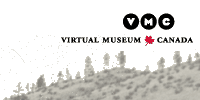
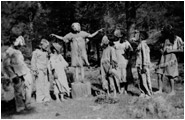
The drawings in this virtual exhibition were created by children of the Osoyoos Indian Band who attended the Inkameep Day School, near Oliver, British Columbia, on the Nk'Mip Reserve. Between 1932 and 1942 these students and their teacher Anthony Walsh worked together to create drawings, paintings, stories and plays that honoured traditional Okanagan language and culture. The arts became a way for the students, aged six to sixteen, to depict their everyday realities and their evolving sense of identity, growing up in mid-twentieth-century British Columbia. Their world was complex, layering Okanagan traditions and stories, old and new ways of life, an evolving agricultural economy, and North American popular culture.
Anthony Walsh's approach to teaching and learning through the arts was very unusual for his time. As anthropologist Andrea Walsh notes, "His writings demonstrate his belief that racial tolerance and democracy could be achieved through the production and exchange of artistic efforts." For Walsh, the arts provided a way to connect with students, earn their trust and learn about them in order to be a better teacher for them. His own sense of the duality of their worlds is apparent in different ways - for example, in encouraging students to sign their work with both Okanagan and Christian names. The drawings themselves reflect Walsh's teaching style. Weaving a path through cultural complexities, they speak to daily life and identity in a visual language drawn from the increasingly dominant white European culture.
The majority of the drawings and plays produced by the students were created between 1936 and 1942. Their artwork was regularly submitted to the Children's Wartime Drawing competition held by the Royal Drawing Society in London, England, and students won awards there every year. The British Royal Family purchased a drawing on buckskin by one student, Francis Baptiste (Sis hu lk). Artwork from Inkameep School was also exhibited in Glasgow, Dublin, Paris and Vienna. In Canada, the artists Emily Carr and Lawren Harris corresponded with Walsh about his work at the school and the children's artwork, as did the American filmmaker Walt Disney.
Between 1863 and 1984, thousands of First Nations children across Canada were separated from their families and communities and sent away to government-run residential schools. These schools focused on cultural assimilation, deliberately and completely suppressing Native language and culture. There is little documentation of what aboriginal children's lives were like in Canada between the first and second World Wars that is not associated with life in the residential school setting. The drawings from Inkameep Day School tell a very different story from those of many First Nations schoolchildren in the mid-twentieth century. This exhibition gives rare insight into how these children lived their lives and saw their world, and into the ongoing national dialogue around the history of evolving ideas of Canadian identity and citizenship.
The End of One Story and the Beginning of Another

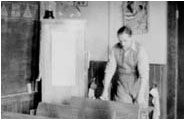
Anthony Walsh resigned as teacher and principal of the Inkameep Day School in January 1942, when he left the Okanagan to join the Legion War Services on Vancouver Island. Upon his departure, the dynamic arts program came to an end. In 1943 the first replacement teacher at the school burned the children's art, denouncing Walsh's teaching practices as backward and detrimental to the process of "civilizing the children." By the mid-1940s, many former students of the Inkameep Day School had been sent to residential schools in Cranbrook and Kamloops, BC.
Some of the children's work was saved in spite of efforts to destroy it. In 1943, Katie Lacey, a member of a local group of non-Native supporters of Walsh and the work done at Inkameep during his tenure, obtained a small collection of work from the reserve. She stored the drawings for twenty years before donating the collection to the Osoyoos Museum when it first opened in 1963. Selected drawings were exhibited there for thirty-eight years. In 2001 the Osoyoos Museum, the Osoyoos Indian Band and the University of Victoria, through the Community-University Research Alliance (CURA) Program, began a collaborative research project to document the remarkable story of the Inkameep Day School and the work produced there during Anthony Walsh's tenure.
Today, the art in the Osoyoos Collection and pieces held by members of the Osoyoos Band continue to be the basis of the community-directed CURA project, funded through the Social Sciences and Humanities Research Council of Canada. Headed by Dr. Andrea Walsh (no relation to Anthony Walsh) of UVic's Department of Anthropology, a team of researchers including Clarence Louie, present chief of the Osoyoos Indian Band, and Leslie Plaskett, director of the Osoyoos Museum, continue to search out and present documents and stories from the Inkameep Day School.
Next Page »» Inkameep and Nk'Mip
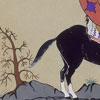 |
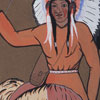 |
 |
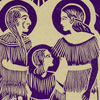 |
 |
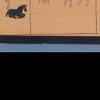 |
![]()
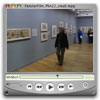 Knowledge Network Segment
Knowledge Network Segment
![]() View Video Clip
View Video Clip
APTN National news
![]() View Video Clip
View Video Clip
![]()
Start of the artwork program
![]() Listen to Audio Clip
Listen to Audio Clip
CBC Audio National Arts Report and the Afternoon Show
![]() Listen to Audio Clip
Listen to Audio Clip

